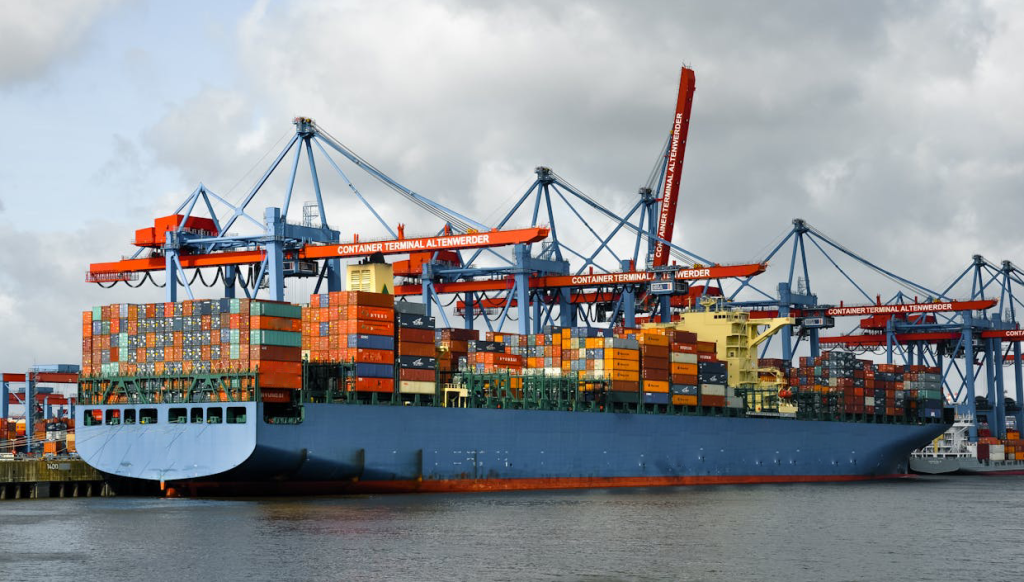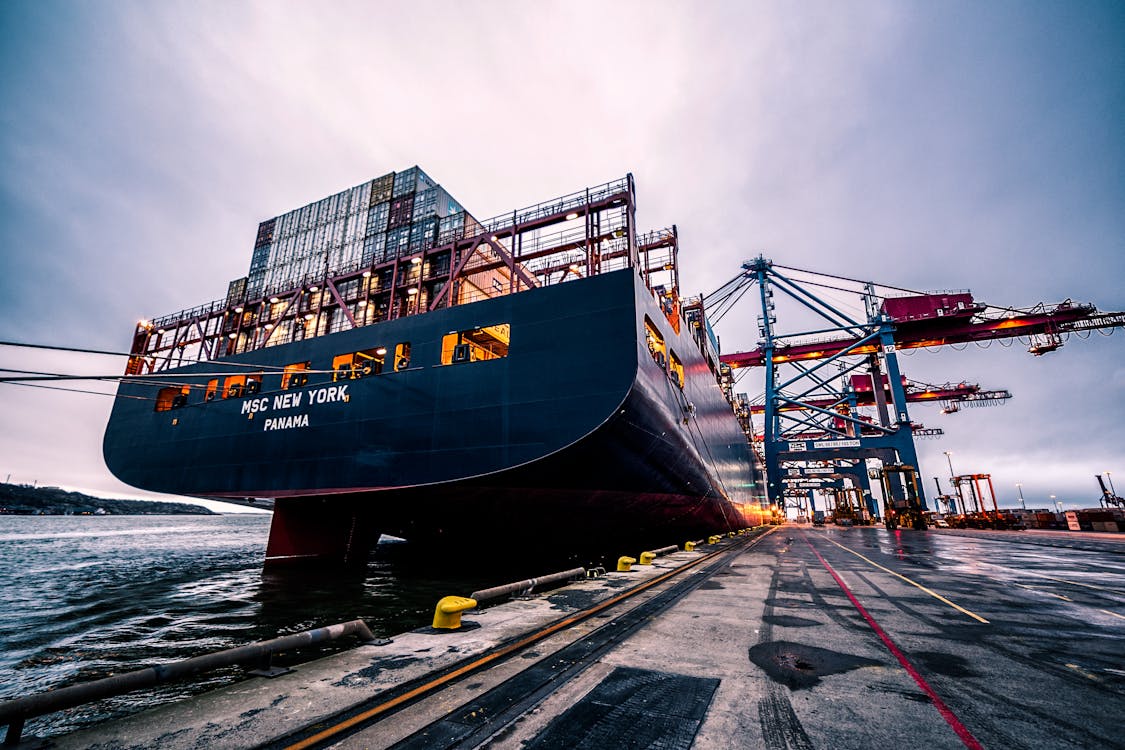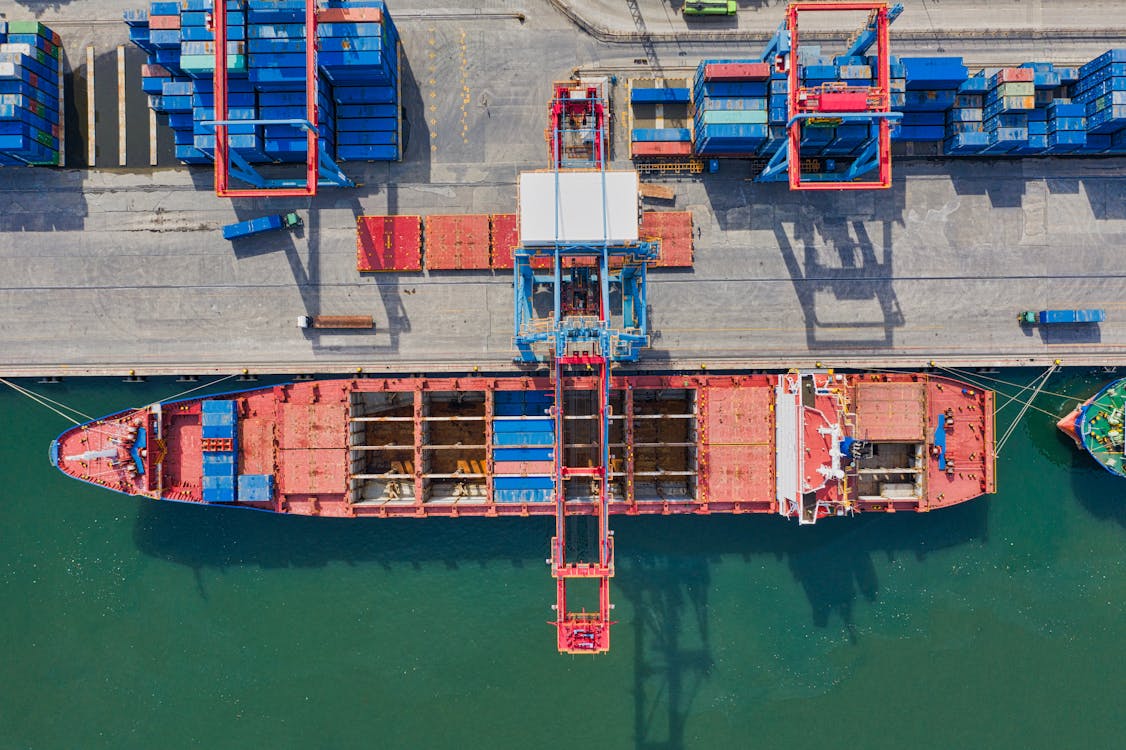Anyone in the shipment industry often has to think about how many containers on a container ship they can load before shipment. However, there is a more important and pressing question to ask about:
“How many containers they can load into EACH cargo ship type?”
Why is this question more important than the previous one? It’s because the previous question doesn’t consider the different cargo ship types.
While standard cargo ships are the most well-known types of its type, there are also other cargo ship types.
Each cargo ship type has different specifications, meaning the number of shipping containers they can carry also differs. As such, this particular bit of knowledge is important for all businesses involved in daily cargo shipment operations.
Also Read: How Many Vehicles Can Fit in a Shipping Container Garage?
Various Cargo Ship Categories

As it turns out, even container ships have many types. While most people only know of some of them, all container ships are equally important despite their different sizes.
To help you know the numbers on how many containers on a container ship, let’s see the full breakdown below!
Ultra Large Container Vessel (ULCV)

What is a ULCV?
ULCVs are the largest container ships in the world that maximize efficiency on major global trade routes. These floating behemoths are longer than four football fields and as tall as a 22-story building when fully loaded.
These ships operate primarily on the Asia-Europe and Transpacific trade routes. They usually carry goods like automobiles, electronics, furniture, clothing, and machinery between major economies.
How Many Containers Can a ULCV Hold?
- 20-foot containers (TEU): 18,000 – 24,000
- 40-foot containers (FEU): 9,000 – 12,000
Since one 40-foot container (FEU) is equal to two 20-foot containers (TEU), ULCVs can handle both container sizes in any situation.
Notable Examples of ULCVs
- MSC Irina – Currently the world’s largest ULCV, capable of carrying over 24,346 TEUs.
- Ever Ace – One of the first ships to surpass 24,000 TEUs in capacity.
- HMM Algeciras – The largest ship owned by South Korea-based HMM, with a capacity of 23,964 TEUs.
Why Are ULCVs Important?
As it stands, there are several reasons why ULCVs are so important in our modern economy. Firstly, it is cost-efficient, meaning it can carry more cargo, which reduces the cost per container.
Secondly, ship designers made them fuel-efficient to minimize their overall environmental impact. Lastly, their sizes can handle the numerous economic needs of major economic zones, meaning they are indispensable long-term.
New Panamax (or Neopanamax)
What is a Neopanamax Ship?
Before 2016, the Panama Canal had strict size limits that prevented larger ships from using it. However, after an extensive expansion project, the canal could now accommodate larger ships, known as Neopanamax vessels.
These ships could fit through the new Panama Canal locks to maximize trade between Asia and the U.S. East Coast. Since these ships could just cross the canal, there is no need to circle South America which needs more fuel consumption and voyage time.
How Many Containers Can a Neopanamax Hold?
- 20-foot containers (TEU): 12,000 – 14,000
- 40-foot containers (FEU): 6,000 – 7,000
Real-World Impact of Neopanamax Ships
After the Panama Canal expanded its lanes, major ports in the area also expanded their facilities and infrastructures. According to research, the average TEU output for the treated ports increased by 20% in their transshipment hubs.
At the same time, Central and South American treated ports also had 12% and 34% growth respectively in the late 2010s. Based on this result, it became clear how Neopanamax ships impacted ports around the canal.
Post-Panamax
What is a Post-Panamax Ship?
Before the Panama Canal expansion, people named any ship too big to fit through the old locks the Post-Panamax. These ships became popular in the 1990s as global trade expanded.
How Many Containers Can a Post-Panamax Hold?
- 20-foot containers (TEU): 5,000 – 10,000
- 40-foot containers (FEU): 2,500 – 5,000
Since these ships couldn’t pass through the Panama Canal, they primarily operated on Transpacific and Asia-Europe routes.
Why They Still Matter
Even though they are smaller than ULCVs and Neopanamax ships, Post-Panamax vessels are still needed in regions where port infrastructure can’t support the largest ships. Small cities with ports, for example, can welcome Post-Panamax ships when Neopanamax ships congest other major ports.
With the help of these smaller ports, areas outside the reach of major ports can still collect the needed cargo in time. If anything, both ship types can go hand-in-hand in sending cargo to all ports thanks to their expanded reach.
Panamax
What is a Panamax Ship?
As the first generation of Panamax ships, these ships were designed to pass through the canal’s old locks. They had a maximum width of 32.3 meters (106 feet) and a capacity limited by canal restrictions.
How Many Containers Can a Panamax Hold?
- 20-foot containers (TEU): 4,500 – 5,000
- 40-foot containers (FEU): 2,250 – 2,500
Panamax ships were the industry standard for nearly a century and are still widely used today. Because of their medium sizes, they can fit in ports that cannot accommodate the newer Neopanamax and Post-Panamax ships.
Feedermax

What is a Feedermax Ship?
Known as medium-sized cargo ships, they transport containers from various ports and send them to the central container terminals. Once sent to these terminals, workers will load the containers onto larger ships or the hub port’s hinterlands.
How Many Containers Can a Feedermax Hold?
- 20-foot containers (TEU): 3,000 – 4,500
- 40-foot containers (FEU): 1,500 – 2,250
Feeder
What is a Feeder Ship?
Feeder ships are smaller than Feedermax ships and typically operate on shorter regional trade routes. As the ship type that defines the standard for feeder ships, this ship comes with a loading gear.
With this loading gear, this ship type can load its containers as most smaller ports have no the needed infrastructure for vessel loading.
How Many Containers Can a Feeder Hold?
- 20-foot containers (TEU): 1,000 – 3,000
- 40-foot containers (FEU): 500 – 1,500
Small Feeder
What is a Small Feeder Ship?
These are the smallest container ships that operate on short-haul and inland routes. With these ships, companies don’t have to use larger container ships that can’t fit in smaller ports and hubs.
How Many Containers Can a Small Feeder Hold?
- 20-foot containers (TEU): 500 – 1,000
- 40-foot containers (FEU): 250 – 500
Because of these ships’ smaller sizes than the other ships, they have a more limited role in transporting cargo than their larger counterparts. Furthermore, unlike larger ships that have more protective measures to withstand harsh maritime transport, small feeders are more vulnerable to weather patterns.
Quick Recap and Additional Notes
To quickly sum up the number of how many containers on a container ship, we have prepared this table for you:
| Ship Type | 20-foot Containers (TEU) | 40-foot Containers (TEU) |
| UCLV | 14,000 – higher | 7,000 – higher |
| New Panamax | 12,000 – 14,000 | 6,000 – 7,000 |
| Post-Panamax | 5,000 – 10,000 | 2,500 – 5,000 |
| Panamax | 4,500 – 5,000 | 2,250 – 2,500 |
| Feedermax | 3,000 – 4,500 | 1,500 – 2,250 |
| Feeder | 1,000 – 3,000 | 500 – 1,500 |
| Small Feeder | 500 – 1,000 | 250 – 500 |
With their distinctive specifications and strong and weak points, you must know how to count how many containers on a container ship type before choosing it for your freight.
Oftentimes, the numbers alone by themselves do not determine your choice. Other factors including fuel consumption, port destination, and time allocated for freight can also affect your final decision.
As a result, you would probably choose a Panamax ship instead of a UCLV because its port destination can’t load a fully loaded UCLV in its terminals. However, by this point, you’ve probably made a wise decision in meeting your freight goals since you’ve considered every factor.
Also Read: Suitable Sea Container Types for Oil Rigs and Offshore Sites
Conclusion
Once learning the numbers on how many containers on a container ship type, you can now easily choose the most suitable type for loading your containers. To make the freight problem-free, buy or rent Tradecorp’s shipping containers today via its quote form. Fine-tuned for use in all intermodal transportation modes, Tradecorp’s shipping containers are industry leaders in meeting all the customers’ needs!


